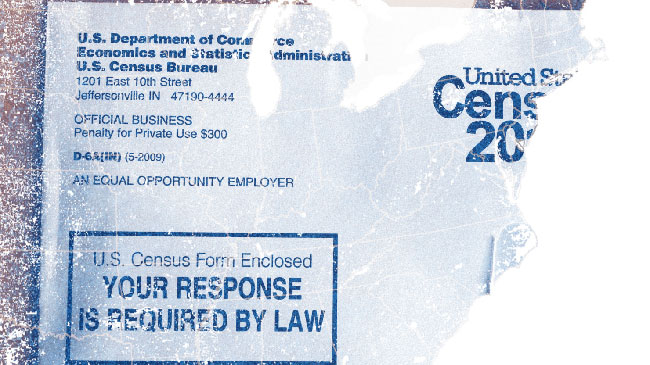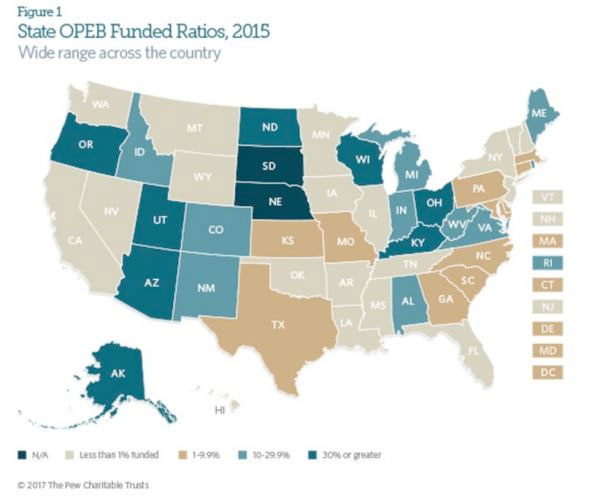Video: Ever Wonder Why They Keep Calling Our Form of Government a Democracy?
Have you ever wondered why deep state actors and media repeaters use the word "democracy" instead of "Constitutional Republic"?
| Stats |
Have you ever wondered why deep state actors and media repeaters use the word "democracy" instead of "Constitutional Republic"?
Walter Edward Williams (born March 31, 1936) is an American economist, commentator, and academic. He is the John M. Olin Distinguished Professor of Economics at George Mason University, as well as a syndicated columnist and author known for his classical liberal and libertarian conservative views.

President Trump’s citizenship question on the upcoming U.S. census is, contrary to popular opinion, the norm for the decennial survey.
 Barack Obama was the first President to exclude a question on citizenship in the U.S. Census.
Barack Obama was the first President to exclude a question on citizenship in the U.S. Census.
But today, the Trump administration is being assailed from the Left for its efforts to include the question.
The Left has responded typically, with accusations of racism. The question of nationality, they claim, is a danger to immigrants.
There has also been no shortage of confusion as to whether President Donald Trump would go forward with its addition. Trump’s statements appear to contradict news reports that his administration dropped its plan to ask the question after a Supreme Court ruling.
The planned citizenship question asks: “Is this person a citizen of the United States?”

Republic vs Democracy
This is an excerpt from "Overview of America" produced by The John Birch Society. It is narrated by John McManus. --- In a Democracy you can not have Snob rule, meaning, the Ruling Elite or Monarch can not go against the majority (the people). The majority overrules the Snob. However, in a Democracy you can have Mob rule, and the Mob can be just as tyrannical, if not worse than a Snob. The Founding Fathers of the United States warned against pure Democracy for this reason.
By Adam Andrzejewsi
FoxNews.com
The ever-rising federal debt just surpassed $21 trillion last month – at least $65,000 for every person in the U.S. Just how much federal waste, duplication, and weird or unnecessary spending are your tax dollars funding?
It’s hard to know where to begin, but here are some starters.
Delving into the trillions of dollars in annual spending, our government transparency organization, OpenTheBooks.com, recently examined Washington’s discretionary grants system – beyond such big-ticket items as health, welfare and defense. We found that the feds doled out 560,771 grants totaling $583 billion during fiscal year 2016, the most recent year on record.
This means, on average, each grant exceeded $1 million. Not every federal grant is wasteful, but there are plenty that are highly questionable.
Consider these outlandish examples from the Department of Health and Human Services (HHS) in the final year of the Obama Administration. (We’ve included the names of the congressional representatives for the zip codes where the grant was received.)
· Sex-Ed for Prostitutes: Barbara Lee, D-Calif. – The California Prostitutes Education Project received nearly $1.5 million from HHS to teach sex-ed to prostitutes. The project seeks to teach prostitutes about safer sex and needle use in a way that’s respectful to its clients’ lifestyle and choices – even though prostitution is illegal in California and 48 other states.
· Designing Condoms: Joseph Kennedy III, D-Mass. – More than $200,000 funded a new condom design to address “a lack of adequate lubrication,” currently a “universal drawback” in other condom designs. The grant recipient – a company called Hydroglyde Coatings with the sole mission to design the perfect condom lubricant – should fund its own research and development.
· Video Game for Your Future Self: Robert Wittman, R-Va. – More than $650,000 funded video games designed to “make the future feel close,” allowing adolescents to explore their future selves. These games are titled “My World of Dreams,” “The Valley of Others,” “Disappointment Bridge,” and “The Sea of Hope.”
· Pedestrian Training in China: Terri Sewell, D-Ala. – The University of Alabama received $183,750 to develop a virtual reality platform to teach children how to cross the street – about as far from Alabama as possible.
· E-Diary for Micro-Aggressions: Adam Kinzinger, R-Ill. – Northern Illinois University received $173,089 from HHS for a four-week study in which “radically diverse bisexual women” documented their experience with micro-aggressions using a daily e-diary.
Health & Human Services was the biggest porker by far – doling out roughly $4 of every $5 in federal grants. The total grant tab at HHS was $421 billion.
But the waste didn’t just flow from there. Ten other federal agencies doled out more than $1 billion in grants in fiscal year 2016 – and many of these agencies went off-mission in doing so.
· Galactic Animated Cartoons: Mo Brooks, R-Ala. – The National Aeronautics and Space Administration (NASA) awarded $2.5 million in grant funding to the Alabama Space Science Exhibit Commission to produce two seasons of “Space Racers,” an animated children’s cartoon in which the main characters embark on several galactic adventures.
· Zoombinis Computer Game: Katherine Clark, D-Mass. – The National Science Foundation (NSF) granted more than $658,000 to redevelop a 1990s computer game called “The Logical Journey of the Zoombinis” where children create their own small blue creature – the Zoombini – to help them through adventure challenges.
· Hobo Day: Kristi Noem, R-S.D., zip code 57007 – A grant for nearly $12,000 from the National Endowment for the Arts (NEA) funded South Dakota State’s Historic Hobo Day where students dress up as “hobos” and parade through the streets.
There is more, much more. And now you can see it all for yourself, zip code by zip code, with an interactive map we’ve built at OpentheBooks.com. When you open the tool, you will be swallowed in a sea of red – we mapped every grant to a zip code pin. It may look intimidating – but simply zoom in or enter your zip code in the search bar above the map, click on a pin, then scroll down to see the results.
Editor's Note: Only counting US citizens is essential when calculating how many Congressional House seats any given state is allowed. If millions of illegals have been counted in the past, it's possible that some states, like California, may have more Congressional seats than they are properly permitted.
~~~~~~~~
DALLAS (CBSDFW.COM/AP) – The Trump administration’s decision to ask people about their citizenship in the 2020 census will end up at the Supreme Court according to Civil Liberties attorney Alan Dershowitz. The question is – when?
“Whether it will end up [at the Supreme Court] in time for the next Census is a hard question because the law moves slowly,” Dershowitz told CBS 11 Political Reporter Jack Fink.
Dershowitz stressed that the Census is required by the constitution. “We get to determine who gets Congressional seats based on the Census,” he said. The Census is used to determine the number of congressional districts in each state as well as federal funding for schools, roads, and other projects.
Several states that have slowing population growth or high numbers of immigrants such as California, New York, Illinois, Massachusetts and Ohio are typically at risk of losing U.S. House seats when their congressional districts are redrawn every 10 years — depending on how fully their residents are counted.
Dershowitz also said that – whether a citizenship question should be on the Census – is hard to answer. “The answers to the specific question… are very complex and very difficult and we haven’t really begun to sort them out,” he said. “And I think these are the kinds of questions that we have to begin to ask. And they’ll be asked – not only in the halls of Congress – but in the courts,” he continued. “Because there will be challenges to that question. Because if that question results in Green Card holders not submitting themselves to the Census – Green Card holders are American persons under the law – [they] have to be counted,” Dershowitz continued. “Obviously illegal aliens have a different status.”
“These are very important questions but they are constitutional in nature because the Census determines the House of Representatives and other important aspects of Americas legal and Constitutional life,” Dershowitz added.
At least one lawsuit has already been filed.
California struck quickly, with Attorney General Xavier Becerra filing a federal lawsuit Tuesday that seeks to block Commerce Secretary Wilbur Ross’ decision to add a citizenship question in 2020.
Officials from New York and New Jersey, also Democratic-led states, were also planning on leading or participating in lawsuits. Massachusetts signaled interest, too.
Dershowitz spoke in Irving this week before the Institute of Policy Innovation, a free-market think tank.
Sunday on CNN’s “State of the Union,” while discussing the government shutdown, White House budget director Mick Mulvaney said Senate Majority Leader Chuck Schumer (D-NY) offer on the border wall was only to “authorize” funding, not “appropriating” the money.
by Tyler Durden
Zerohedge.com
We've spent a lot of time of late discussing the inevitable public pension crisis that will eventually wreak havoc on global financial markets. And while the scale of the public pension underfunding is unprecedented, with estimates ranging from $3 - $8 trillion, there is another taxpayer-funded retirement benefit that has been promised to union workers over the years that puts pensions to shame...at least on a percentage funded basis.
Other Post-Employment Benefits (OPEB), like pensions, are a stream of future payments that have been promised to retirees primarily to cover healthcare costs. However, unlike pensions, most government entities don't even bother to accrue assets for this massive stream of future costs resulting in $700 billion of liabilities that most taxpayer likely didn't even know existed.
As a study from Pew Charitable Trusts points out today, the average OPEB plan in the U.S. today is only 6.7% funded (and that's if you believe their discount rates...so probably figure about half that amount in reality) and many states around the country are even worse.
States paid a total of $20.8 billion in 2015 for non-pension worker retirement benefits, known as other post-employment benefits (OPEB). Almost all of this money was spent on retiree health care. The aggregate figure for 2015, the most recent year for which complete data are available, represents an increase of $1.2 billion, or 6 percent, over the previous year. The 2015 payments covered the cost of current-year benefits and in some states included funding to address OPEB liabilities. These liabilities—the cost of benefits, in today’s dollars, to be paid in future years—totaled $692 billion in 2015, a 5 percent increase over 2014.In 2015, states had $46 billion in assets to meet $692 billion in OPEB liabilities, yielding a funded ratio of 6.7 percent. The total amount of assets was slightly higher than the reported $44 billion in 2014, though the funding ratio did not change. The average state OPEB funded ratio is low because most states pay for retiree health care benefits on a pay-as-you-go basis, appropriating revenue annually to pay retiree health care costs for that year rather than pre-funding liabilities by setting aside assets to cover the state’s share of future retiree health benefit costs.
State OPEB funded ratios vary widely, from less than 1 percent in 19 states to 92 percent in Arizona. As Figure 1 shows, only eight have funded ratios over 30 percent. These states typically follow pre-funding policies spelled out in state law. Many of them also make use of the expertise of staff from the state pension system to invest and manage plan assets.

| You can send a check or money order to: The KTAO Project P.O. Box 1086 Crestone, CO 81131 or donate online: |
| Stats |